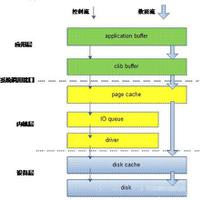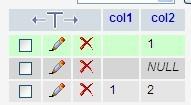CentOS 6和RHEL 6上Linux用户名的真正规则是什么?
我正在编写一些可用于创建Linux用户帐户的Web UI页面。该Web UI将在CentOS 6(从RHEL
6派生)上使用。我发现关于什么构成有效的Linux用户名的信息不一致且不完整。我去了源代码,检查了Linux shadow-
utils源代码软件包,但我不能确保所查看的版本实际上与CentOS 6的版本相同。
以下是我当前使用的代码片段,其中包括从shadow-
utils软件包版本4.1.4.3复制/粘贴注释,加上我自己的一些注释以及Java正则表达式搜索,以使我了解阴影- utils来源。
chkname.c中引用的“
is_valid_name()”检查显然不是Linux上的useradd命令所使用的,因为注释(和C代码源)不允许名称以数字开头。但是,useradd确实允许创建一个帐户,例如“
1234”。
我将不胜感激,从现在的内容到更正确的调整,以及有关如何通过一些稍有不同的is_valid_name函数实现useradd.c的信息,我们将不胜感激。
谢谢!艾伦
/** * Define constants for use in isNameLinuxCompatible(...) method.
*
* The source for the Linux compatible user name rule is is_valid_name(...) a function in the "shadow" package
* for Linux. The source file for that function has a comment as follows:
* User/group names must match [a-z_][a-z0-9_-]*[$]
* That expression is a little loose/sloppy since
* (1) the trailing $ sign is optional, and
* (2) uppercase A-Z is also ok (and case is significant, 'A' != 'a').
*
* We deal with (1) by using the [$]? form where the ? means zero or more characters (aka "greedy").
* We deal with (2) by using the CASE_INSENSITIVE option.
*
* Another way to express this is:
* 1st character: a-z_ required at least one char
* chars other than first and last: a-z0-9_- optional
* last character: $ optional
* Max length is 31. Min length is 1.
*
* NOTE: The initial ^ and final $ below are important since we need the entire string to satisfy the rule,
* from beginning to end.
*
* See http://download.oracle.com/javase/6/docs/api/java/util/regex/Pattern.html for reference info on pattern matching.
*/
private static final String LINUX_USERNAME_REGEX = "^[a-z_][a-z0-9_-]*[$]?$";
private static final Pattern LINUX_USERNAME_PATTERN = Pattern.compile(LINUX_USERNAME_REGEX, Pattern.CASE_INSENSITIVE);
private static final int LINUX_USERNAME_MINLENGTH = 1;
private static final int LINUX_USERNAME_MAXLENGTH = 31;
/**
* See if username is compatible with standard Linux rules for usernames, in terms of length and
* in terms of content.
*
* @param username the name to be checked for validity
* @return true if Linux compatible, else false
*/
public boolean isNameLinuxCompatible (final String username) {
boolean nameOK = false;
if (username != null) {
int len = username.length();
if ((len >= LINUX_USERNAME_MINLENGTH) && (len <= LINUX_USERNAME_MAXLENGTH)) {
Matcher m = LINUX_USERNAME_PATTERN.matcher(username);
nameOK = m.find();
}
}
return (nameOK);
}
回答:
基本的gnu / linux用户名是32个字符串(useradd(8))。这是BSD
4.3标准的传统格式。passwd(5)添加了一些其他限制,例如,不要使用大写字母,不要使用圆点,不要以破折号结尾,不得包含冒号。
为了安全起见,请遵循C标识符的相同规则:
([a-z_][a-z0-9_]{0,30})那是问题的一半。现代的GNU / Linux发行版使用PAM进行用户身份验证。使用它,您可以选择所需的任何规则以及任何数据源。
既然你正在编写一个程序这是更好地定义自己的格式,然后使用类似的pam_ldap,pam_mysql等来访问它。
以上是 CentOS 6和RHEL 6上Linux用户名的真正规则是什么? 的全部内容, 来源链接: utcz.com/qa/418975.html









